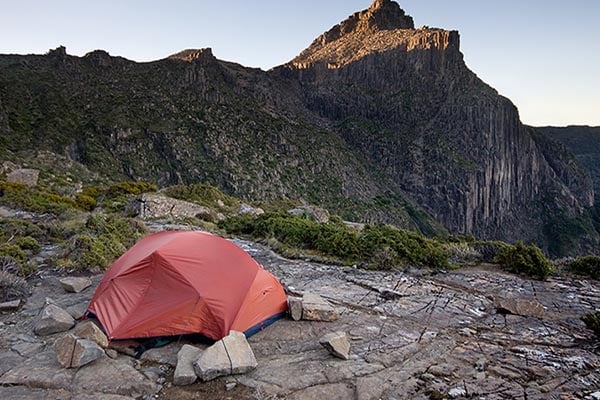Last Updated on
Whether you’re kicking back around the campfire with your buddies or at camp with your fellow hunters, a tent is an important investment that makes these trips possible. A quality tent can last countless seasons as long as you take care of it, but there are important care instructions that everyone should follow to maximize the life of their tent. So before you head out on your next camp or store your tent up for the coming winter, be sure to read our tent care tips.
At Camp
Tent care and longevity begins in the field, and how you treat your tent while camping will make all difference when you want your tent to perform five years from now. Let’s touch on some important care tips for when you’re setting up, using and tearing down your tent.
Pick A Good Spot
One of the first things you should always do when you arrive at camp is scout a proper spot for your tent. Sure it should be somewhat level, and it’s no secret that some campers deal with a slight incline better than others. But more importantly, you should check the area that will be beneath your tent for debris. Rocks, small shrubs, fallen limbs and seeds like acorns and pine cones can all damage the floor of your tent. This can be of particular concern if your camp receives a good amount of rain fall. Water could seep in from the floor of your tent, and suddenly your cozy outdoor accommodations are damp. Kick the area around your tent free of debris, and make sure the area is clear before you set up your tent. Better yet, you can buy a tent footprint at a reasonable price that will better protect the floor of your tent. You can always patch the floor if damaged, but it’s best to avoid this as long as you can.
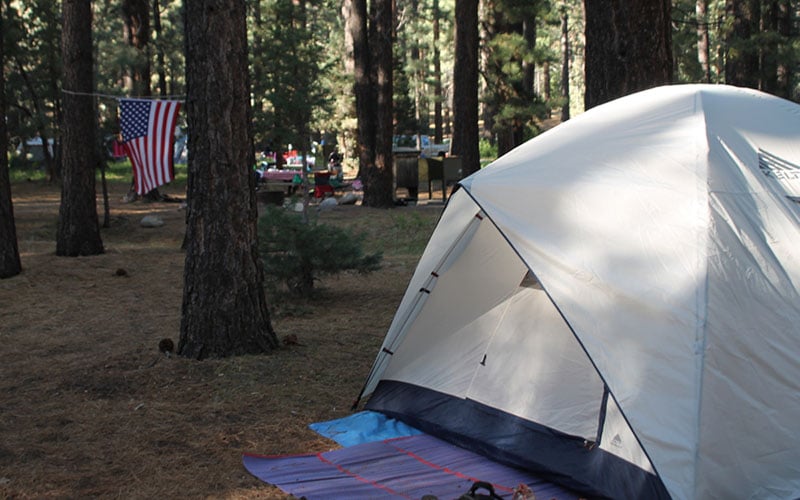
One other note concerning your selection of a spot. Avoid pitching your tent under suspicious or dead-looking trees as you don’t want them coming down on your tent unexpectedly. You should also examine your spot for the possibility of a flash flood, and while it might seem pleasant to pitch right next to a river, you’re better off placing your tent several feet away from any body of water. These tips will help you and your tent avoid potential discomfort or danger.
Watch Sun Exposure
You might not know that your rain fly is good for more than just repelling rain. It’s actually treated to resist the sun, but the frame of your tent under the rain fly is usually less resistant to the sun. It’s always good practice to select a shady spot for your tent, but sometimes ample shade isn’t an option depending on where you camp. In situations like this, make sure you have the rain fly on during periods of intense sun. You won’t want to lounge in your tent as the sun is beating down on it anyway. Even if you’ve pitched your tent in the shade, it’s always good practice to keep your rain fly on. If you want to sleep with it off under the stars, you can pack it away once the sun is down, but always keep it close at hand to prevent sun exposure and to keep your gear dry.
Stake It Down
So you’ve selected a spot that is very calm and you’re pretty sure there is no need to stake the tent down, right? Well when a storm blows in and you’re chasing your tent, you’ll wish you would’ve taken the extra time to stake it down. Properly placed stakes will also enlarge the surface area of your tent. Be sure to have a few extra stakes on hand as the standard stakes tend to bend thereby rendering them useless as functional stakes. Replace your standard stakes with heavy-duty reinforced stakes and you’ll be far less worried about stake damage in the future. For those extra windy locations, you can use your tent guy lines to add extra stability to your tent.
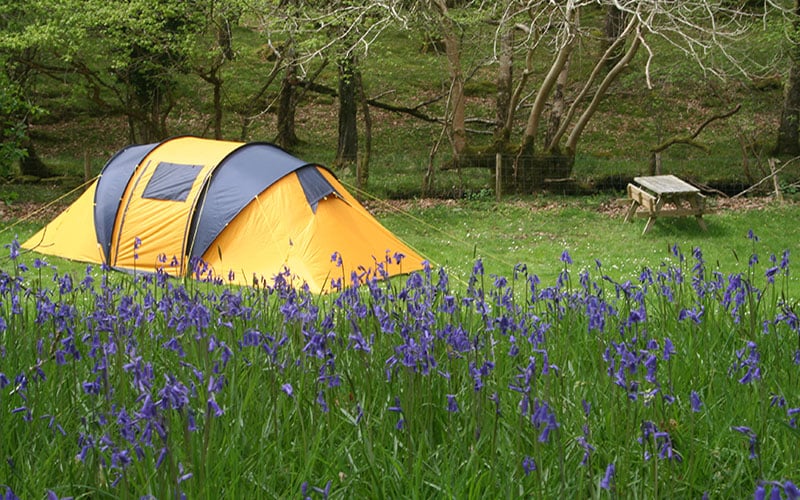
Exercise Care With The Tent Poles
Tent poles are usually connected with an internal cord that keeps them grouped together and ensures you piece them together properly. While these internal cords are great to have in any tent pole, they are also subject to damage. Exercise care when assembling and tearing down tent poles, and start at the ends of the pole rather than the middle to reduce the overall pressure placed on the internal cord. Should your tent pole break, make sure you have a pole splint on hand to keep your frame strong until you can replace or repair the damaged pole.
Stuff Your Tent
You can prolong the life of your tent by stuffing it into its bag rather than carefully folding it. For example, if you carefully fold your tent the same way use after use, an established crease will begin to form on the fold lines. Over time this will become a weak spot, and eventually your tent or rain fly will fail on that crease line. You can avoid this by stuffing your tent in a sack instead of folding it. Simply take the tent by one end, and systematically stuff the tent into the sack. This is actually much easier than trying to meticulously fold it anyway.
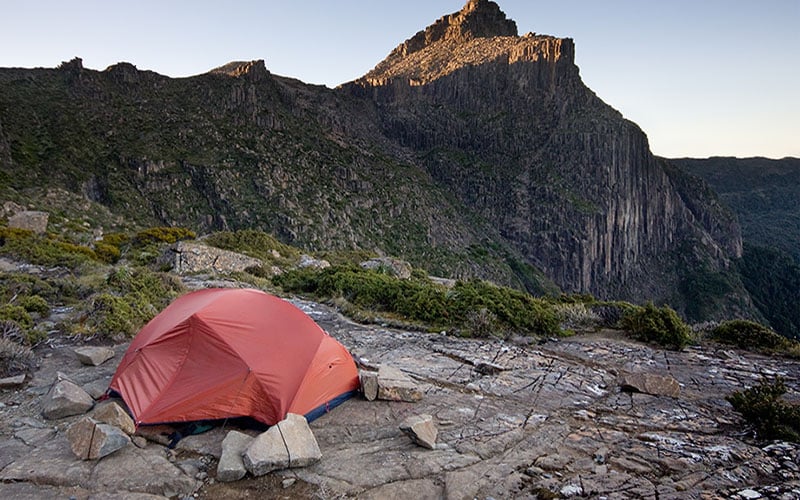
Dry It Out / Clean It Out
Frost or dew is a common sight on your tent in the morning, but if you have to pack up before the sun dries it out, you might have mildew form on your tent when it is in storage. In those circumstances where you can’t dry your tent out at camp, be sure to set it back up at home and lay the rain fly out to dry as well. Remember direct sunlight isn’t the best place to dry a tent, but rather a somewhat shady spot. Let the wind and the air dry it out vs. the hot rays of the sun.
Before you pack up your tent, have a friend help you turn it over while the frame is still intact. If you leave the doors unzipped, you can knock out much of the debris like twigs, pine needles and dirt, and this will reduce the likelihood of damage when you stuff your tent. It never hurts to have a small dust pan on hand if you have space for it.
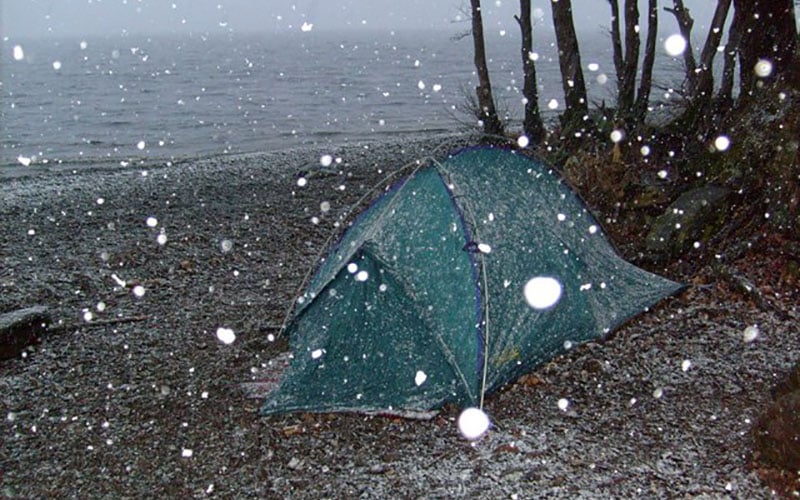
In Home Storage
Once you’re back at home, there are a few things you can do to prolong tent life before you store it.
Gentle Cleaning
For those circumstances where your tent collects mud or needs a cleaning, there are cleaning options, but you can’t just toss it in the washing machine, that would end badly. A gentle soap (free from detergents and perfumes) and a soft brush or sponge are the best cleaning tools, and use cold water instead of warm or hot water. You can set the tent up normally in your back yard (again in the shade) and scrub it thoroughly. Once finished, make sure its completely dry before packing it away. You can also buy tent-specific cleaning agents if you’re worried about selecting the wrong soap.
Waterproofing Sprays
Every so often your rain fly needs a waterproof recharging. You can find this waterproofing spray in a can, and you’ll want to set the tent up normally in a place with ventilation and allow plenty of time for it to soak in and dry. You can also waterproof the floor of your tent and tent footprint with the same spray.
Storage
Finally, storage of your tent is pretty simple and not unlike storage of most gear. Pack the tent properly (i.e. stuff it) and place it in a cool, dry place. Avoid placing it on the basement floor or similar location in case there is any flooding. At the beginning of every season, it never hurts to set it up and check to make sure everything is in tact before taking it out to camp again.
images one, two, three and thumb, and four courtesy of Wikimedia Commons.
